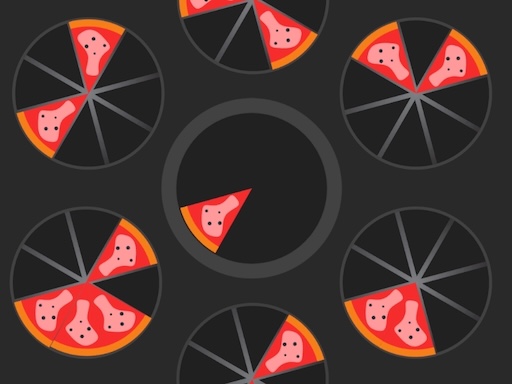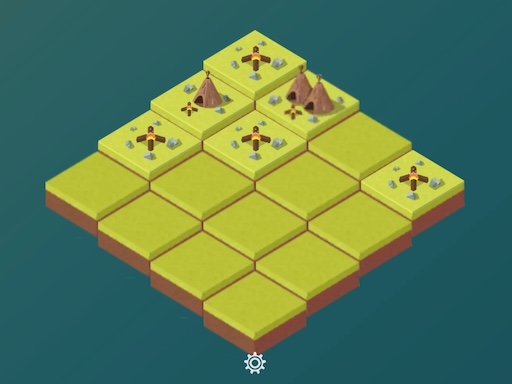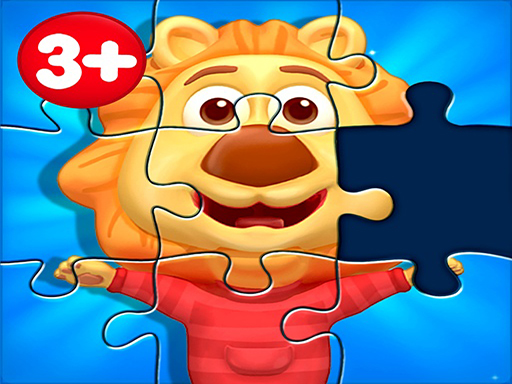Royal Flush Stack
About Royal Flush Stack
You know that feeling, right? That rare, almost magical moment when you stumble upon a game you’ve never heard of, something completely off your radar, and within minutes, it just *clicks*. It sinks its hooks in, and suddenly, the rest of the world fades away. Your phone buzzes, a notification pops up, but you barely register it. All that matters is the grid in front of you, the cards waiting for their moment, the potential for that perfect, glorious combo. That’s exactly what happened to me with Royal Flush Stack, and honestly, I haven’t been able to stop thinking about it since.
I mean, I’ve always been drawn to games that blend familiar concepts in unexpected ways. There’s something truly special about taking two things you love, two things that seem disparate, and seeing them fused into something entirely new and brilliant. For me, that’s usually a good card game and a brain-tickling puzzle. I’ve spent countless hours with solitaire variants, with match-threes, with those clever little logic puzzles that make you feel like a genius when you finally crack them. But Royal Flush Stack? This isn’t just a blend; it’s a revelation. It’s like someone took the strategic depth, the sheer *elegance* of poker, and then injected it with the addictive, tactile satisfaction of a sliding-tile puzzle. And let me tell you, the result is pure, unadulterated gaming bliss.
Imagine this: you’re looking at a 4x4 grid. It’s simple, clean, and immediately understandable. But instead of numbers or colors, you’ve got playing cards. Just seeing them there, scattered across the board, immediately sparks that familiar poker-brain. You see a King of Hearts next to a King of Clubs, and your mind instantly goes, "Pair!" But here’s the kicker, the part that truly elevates it: you don't just *see* the pair, you *make* it. You slide the King of Clubs into the King of Hearts, and with a satisfying little *thwip* sound and a subtle visual flourish, they merge. They don't just disappear; they become a *single, higher-value card*. Or, in the case of pairs, they form a 'Pair' tile, clearing space and giving you points. It's not about matching and removing; it's about merging and evolving, always pushing towards something greater.
What’s fascinating is how quickly your brain adapts to this new language. You start seeing the grid not just as individual cards, but as a dynamic canvas of potential. You’ll find yourself looking at a 7, an 8, and a 9, and your mind immediately starts calculating: "If I slide this 7 here, and then this 8 there, I can get them all in a line, and if a 10 pops up, boom, a Straight!" The initial moves are easy, almost intuitive. You clear a few pairs, maybe a Three of a Kind if the stars align. You get a feel for the sliding mechanics – it’s smooth, responsive, exactly what you want from a puzzle game. There’s no clunkiness, no frustrating lag. It just *works*.
But then, the real magic happens. You start to realize the deeper implications. It’s not just about forming *any* hand; it’s about forming the *best* hands. A simple Pair gives you a few points, sure. A Three of a Kind? Better. But a Straight? A Flush? A Full House? Oh, that’s where the score really starts to climb. And the ultimate prize, the one that makes your heart actually skip a beat when you see the pieces fall into place? A Royal Flush. Just thinking about it, that perfect sequence of Ten, Jack, Queen, King, Ace, all of the same suit, all merging into one glorious, high-scoring behemoth… it’s the kind of moment that makes you lean forward in your chair, eyes wide, breath held.
This isn’t a game where you can just blindly swipe. Every move matters. Every decision reverberates across the grid. You might have the perfect opportunity to make a Flush right now, but doing so might block your path to a much bigger Full House in the next two moves. Or maybe, just maybe, you can set up *both*. That’s the kind of strategic thinking it demands. You’re constantly weighing immediate gratification against long-term planning. It’s like playing chess, but with the added thrill of a deck of cards constantly introducing new variables.
And speaking of the deck, that’s where the tension truly builds. You draw new cards from the deck when you need them, filling empty spaces on the grid. It’s your lifeline, your source of new possibilities. But it’s also a finite resource. The game ends when you either run out of moves – when the grid is so jammed that you can’t slide anything – or when the deck runs dry. This creates an incredible sense of urgency. You’re not just trying to make big hands; you’re trying to manage your space, keep the board open, and make every single card draw count. There’s nothing quite like the feeling of drawing a card, hoping for that specific Queen of Spades to complete your Flush, and getting… a 3 of Clubs. A momentary sigh of frustration, followed by an immediate mental pivot: "Okay, 3 of Clubs. What can I do with *that*? Is there another 3 I can pair it with? Or can it be part of a low straight?"
The brilliant thing about this is how it manages to be both incredibly relaxing and intensely stimulating at the same time. You can pick it up for a quick five-minute session, just clearing a few pairs and enjoying the satisfying visual and auditory feedback of the merges. But more often than not, those five minutes stretch into twenty, then forty, then an hour, and suddenly you look up and realize the sun has set. You get into this incredible flow state, where your fingers are moving almost autonomously, but your brain is working at a hundred miles an hour, analyzing patterns, predicting outcomes, and celebrating every small victory. The vibrant visuals are a huge part of this; they’re clean, crisp, and the animations for merging hands are incredibly satisfying. You can almost feel the cards slotting together, hear that little *ding* of points being added.
In my experience, the best moments come when a strategy finally clicks into place. You’ve been holding onto a couple of cards, deliberately leaving a space open, hoping for that one specific card from the deck. You draw, and there it is. The perfect card. And suddenly, a cascade of merges unfolds. A Pair becomes a Three of a Kind, which then combines with other cards to form a Straight, which then, because you’ve been so clever with your suit management, completes a Flush. It’s like watching a Rube Goldberg machine of poker hands, all thanks to your foresight. That’s the kind of rush that keeps you coming back, the kind of intellectual high that few games can deliver.
What I love about games like this is their endless replayability. There’s no single "solution" to Royal Flush Stack. Every game is a fresh challenge, a new deck, a new starting grid. You’re constantly trying to beat your best score, pushing yourself to think a little further ahead, to spot those hidden opportunities for massive points. It’s a journey of mastery, honestly. You start by just trying to clear the board, then you aim for specific hands, and eventually, you’re orchestrating multi-hand combos, clearing huge swathes of the grid, and watching your score explode.
There’s something truly magical about a game that feels both familiar and entirely fresh. Royal Flush Stack isn't just a puzzle game, and it isn't just a card game. It's a new genre unto itself, a testament to clever design and a deep understanding of what makes a game truly addictive. It pulls you in with its simplicity, then keeps you captivated with its surprising depth. You’ll find yourself thinking about potential moves even when you’re not playing, picturing the grid in your mind, wondering if you could have squeezed out a few more points. It’s a game that respects your intelligence, rewards your planning, and provides that incredibly satisfying "aha!" moment over and over again. Trust me, if you’re a puzzle lover, a card shark, or just someone who appreciates genuinely smart game design, you absolutely *have* to experience Royal Flush Stack. You’ll thank me later.
I mean, I’ve always been drawn to games that blend familiar concepts in unexpected ways. There’s something truly special about taking two things you love, two things that seem disparate, and seeing them fused into something entirely new and brilliant. For me, that’s usually a good card game and a brain-tickling puzzle. I’ve spent countless hours with solitaire variants, with match-threes, with those clever little logic puzzles that make you feel like a genius when you finally crack them. But Royal Flush Stack? This isn’t just a blend; it’s a revelation. It’s like someone took the strategic depth, the sheer *elegance* of poker, and then injected it with the addictive, tactile satisfaction of a sliding-tile puzzle. And let me tell you, the result is pure, unadulterated gaming bliss.
Imagine this: you’re looking at a 4x4 grid. It’s simple, clean, and immediately understandable. But instead of numbers or colors, you’ve got playing cards. Just seeing them there, scattered across the board, immediately sparks that familiar poker-brain. You see a King of Hearts next to a King of Clubs, and your mind instantly goes, "Pair!" But here’s the kicker, the part that truly elevates it: you don't just *see* the pair, you *make* it. You slide the King of Clubs into the King of Hearts, and with a satisfying little *thwip* sound and a subtle visual flourish, they merge. They don't just disappear; they become a *single, higher-value card*. Or, in the case of pairs, they form a 'Pair' tile, clearing space and giving you points. It's not about matching and removing; it's about merging and evolving, always pushing towards something greater.
What’s fascinating is how quickly your brain adapts to this new language. You start seeing the grid not just as individual cards, but as a dynamic canvas of potential. You’ll find yourself looking at a 7, an 8, and a 9, and your mind immediately starts calculating: "If I slide this 7 here, and then this 8 there, I can get them all in a line, and if a 10 pops up, boom, a Straight!" The initial moves are easy, almost intuitive. You clear a few pairs, maybe a Three of a Kind if the stars align. You get a feel for the sliding mechanics – it’s smooth, responsive, exactly what you want from a puzzle game. There’s no clunkiness, no frustrating lag. It just *works*.
But then, the real magic happens. You start to realize the deeper implications. It’s not just about forming *any* hand; it’s about forming the *best* hands. A simple Pair gives you a few points, sure. A Three of a Kind? Better. But a Straight? A Flush? A Full House? Oh, that’s where the score really starts to climb. And the ultimate prize, the one that makes your heart actually skip a beat when you see the pieces fall into place? A Royal Flush. Just thinking about it, that perfect sequence of Ten, Jack, Queen, King, Ace, all of the same suit, all merging into one glorious, high-scoring behemoth… it’s the kind of moment that makes you lean forward in your chair, eyes wide, breath held.
This isn’t a game where you can just blindly swipe. Every move matters. Every decision reverberates across the grid. You might have the perfect opportunity to make a Flush right now, but doing so might block your path to a much bigger Full House in the next two moves. Or maybe, just maybe, you can set up *both*. That’s the kind of strategic thinking it demands. You’re constantly weighing immediate gratification against long-term planning. It’s like playing chess, but with the added thrill of a deck of cards constantly introducing new variables.
And speaking of the deck, that’s where the tension truly builds. You draw new cards from the deck when you need them, filling empty spaces on the grid. It’s your lifeline, your source of new possibilities. But it’s also a finite resource. The game ends when you either run out of moves – when the grid is so jammed that you can’t slide anything – or when the deck runs dry. This creates an incredible sense of urgency. You’re not just trying to make big hands; you’re trying to manage your space, keep the board open, and make every single card draw count. There’s nothing quite like the feeling of drawing a card, hoping for that specific Queen of Spades to complete your Flush, and getting… a 3 of Clubs. A momentary sigh of frustration, followed by an immediate mental pivot: "Okay, 3 of Clubs. What can I do with *that*? Is there another 3 I can pair it with? Or can it be part of a low straight?"
The brilliant thing about this is how it manages to be both incredibly relaxing and intensely stimulating at the same time. You can pick it up for a quick five-minute session, just clearing a few pairs and enjoying the satisfying visual and auditory feedback of the merges. But more often than not, those five minutes stretch into twenty, then forty, then an hour, and suddenly you look up and realize the sun has set. You get into this incredible flow state, where your fingers are moving almost autonomously, but your brain is working at a hundred miles an hour, analyzing patterns, predicting outcomes, and celebrating every small victory. The vibrant visuals are a huge part of this; they’re clean, crisp, and the animations for merging hands are incredibly satisfying. You can almost feel the cards slotting together, hear that little *ding* of points being added.
In my experience, the best moments come when a strategy finally clicks into place. You’ve been holding onto a couple of cards, deliberately leaving a space open, hoping for that one specific card from the deck. You draw, and there it is. The perfect card. And suddenly, a cascade of merges unfolds. A Pair becomes a Three of a Kind, which then combines with other cards to form a Straight, which then, because you’ve been so clever with your suit management, completes a Flush. It’s like watching a Rube Goldberg machine of poker hands, all thanks to your foresight. That’s the kind of rush that keeps you coming back, the kind of intellectual high that few games can deliver.
What I love about games like this is their endless replayability. There’s no single "solution" to Royal Flush Stack. Every game is a fresh challenge, a new deck, a new starting grid. You’re constantly trying to beat your best score, pushing yourself to think a little further ahead, to spot those hidden opportunities for massive points. It’s a journey of mastery, honestly. You start by just trying to clear the board, then you aim for specific hands, and eventually, you’re orchestrating multi-hand combos, clearing huge swathes of the grid, and watching your score explode.
There’s something truly magical about a game that feels both familiar and entirely fresh. Royal Flush Stack isn't just a puzzle game, and it isn't just a card game. It's a new genre unto itself, a testament to clever design and a deep understanding of what makes a game truly addictive. It pulls you in with its simplicity, then keeps you captivated with its surprising depth. You’ll find yourself thinking about potential moves even when you’re not playing, picturing the grid in your mind, wondering if you could have squeezed out a few more points. It’s a game that respects your intelligence, rewards your planning, and provides that incredibly satisfying "aha!" moment over and over again. Trust me, if you’re a puzzle lover, a card shark, or just someone who appreciates genuinely smart game design, you absolutely *have* to experience Royal Flush Stack. You’ll thank me later.
Enjoy playing Royal Flush Stack online for free on Qotori games. This Puzzle game offers amazing gameplay and stunning graphics. No downloads required, play directly in your browser!
How to Play
Arrow keys or swipe





Comments
This game is awesome! I love the graphics and gameplay.
One of the best games I've played recently. Highly recommended!